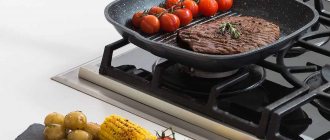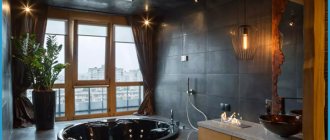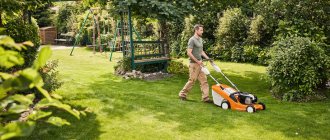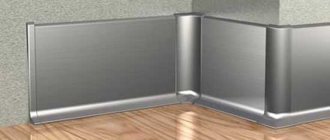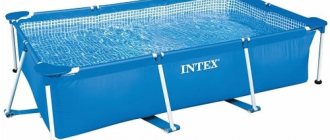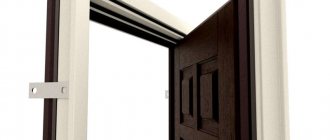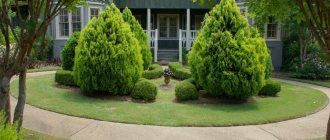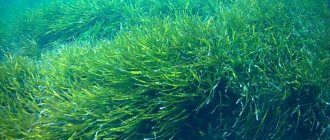What are there
Functions of a plant wall: protective, site zoning, aesthetic.
Green fences are distinguished according to the following parameters:
- Height (up to 60 cm, 1-2 m, above 2 m).
- Width (number of rows).
- Purpose (curb, exterior, landscape).
- Plants (vines, shrubs, conifers, flowering, evergreens).
Sizes from 40 to 60 cm are suitable for borders, 1-2 m for zoning areas, more than 2 m for external fencing (protection from dust and road noise).
Planting width depends on crown density. There are planting options: one row, checkerboard order, 2-3 rows (change of low, medium varieties).
There are types of plantings based on appearance: molded (can be cut), not requiring shaping.
Plants
The selection of plants should be carried out according to categories:
- destination, place of disembarkation;
- annual, perennial species;
- requirements for soil type, lighting, watering;
- resistance to fungal diseases and insect damage;
- growth rate;
- presence of flowering and fruits.
The place is of great importance: permanent residence (private house), temporary (rented building, summer cottage). A temporary hedge for one season can be made from annual varieties (bindweed, morning glory, sweet peas, nasturtium, decorative beans). Advantages of annuals: fast growth, bright colors of flowers, planting new flowers every year.
Perennials are divided into types:
- Shrubs (deciduous, evergreen).
- Lianas.
- Conifers.
- Trees.
The most unpretentious are bushes. Lianas need support - mesh, poles with wire. Blooming roses, berry bushes, and coniferous species require fertilizing with mineral complexes, treatment against pests (insecticides), and fungal diseases (fungicides).
Shrubs
Shrubs are distinguished by the density of their foliage, the ability to form a crown, and the presence of inflorescences and berries. There are three types of bushes:
- dense foliage – boxwood, spirea, euonymus, privet;
- blooming - climbing roses, hydrangea, deutzia, decorative honeysuckle, lilac;
- fruit - pyracantha, dogwood, hazel, blackberry.
Options with dense foliage can be shaped and thinned. Many species have sharp spines - barberry, pyracantha, blackberry. Some varieties have medicinal fruits and stems (schizandra).
Advantage: unpretentiousness, fast growth, low price, possibility of propagation by shoots, dividing the bush.
Lianas
Perennial vines have strong stems that wrap around and cling to supports, wooden and brick surfaces.
Popular vines:
- Ivy - there are deciduous, evergreen varieties, unpretentious, grows in the sun and shady areas.
- Clematis - up to 5 m long, has a variety of flower colors, does not like wetlands or acidic soil.
- Maiden (wild) grapes are frost-resistant; in autumn the green foliage turns crimson and burgundy.
- Schisandra chinensis - grows up to 13-15 m, loves shady places, has medicinal fruits.
- Wisteria - blooms in 5-6 years, requires drainage and shelter in winter in the first year.
They are characterized by slow growth after planting and build up the root system. Rapid growth - for 2, 3 years. All vines require care - constant pruning and shaping.
Conifers
Evergreens are popular because they look beautiful in all seasons.
Pros: impressive appearance, good protection, pleasant smell of pine needles, phytoncides. Cons: slow growth, maintenance (pruning, pest control), high cost.
Popular conifers: fir, spruce, thuja, juniper, boxwood, cypress.
Trees
There are two types of trees: deciduous and flowering. They grow more than 2-3 m. They protect from noisy roads and railway crossings from dust and noise. Cons: difficult to prune after a few years; they shade the area.
Popular representatives: small-leaved linden, maple, apple berry, cherry plum.
Planting and care
Initially, the territory is marked out. Material for a fast-growing hedge can be planted in two ways: dig a trench at least 40 cm deep and 60-100 cm wide, depending on the number of rows, or dig holes for each specimen separately. The planting step is chosen depending on the type of plants.
The minimum distance between specimens for single-row planting is 25 cm for climbing varieties, for shrubs 0.5-1.5 m, for trees - from 1.5 m. For double-row planting, the planting step is from 0.5 m.
It is recommended to replace the soil in the hole with a nutrient composition. The mixture is prepared according to the needs of the plant species. The crown of the hedge is formed during the first 4 years. Not all types of plants need pruning after planting. Typically, in the first 2 years, pruning is not used for climbing varieties and some shrubs. Some plant species, such as conifers, require pyramidal pruning to prevent lower branches from falling off. All types of plants require systematic watering and fertilizing during the period of rooting and growth.
How to choose
When choosing suitable plants, you should decide on the basic rules:
- Choose a location.
- Determine the conditions (soil type, proximity to groundwater, light, dark place).
- Quality support for vines and climbing species.
- Draw up a project (layout, number of seedlings, seeds).
- Determine the height, density, growth conditions, presence of inflorescences, berries, fruits.
- Familiarize yourself with the assortment of online stores and nursery websites.
- Calculate the number of seedlings needed.
- The cost depends on the type of root system (open OKS, closed ZKS), age.
- Read customer reviews about the seller, the quality of the product, and the possibility of exchange.
Do not choose varieties with poisonous (privet, yew berry), inedible berries (decorative honeysuckle, barberry) if there are children in the family.
Flowering varieties can attract large numbers of insects (bees, wasps).
The best survival rate is in plants with a closed root system (earthen ball), age up to 3 years, height up to 1 m.
Mixed options look beautiful: thuja and juniper, privet and boxwood.
Ivy should not be planted with others; it can choke out flowering species.
Hawthorn
Due to the powerful root system and strength of the trunks, hawthorn hedges are durable and reliable. The plant can grow on various types of soils and is resistant to severe frosts. Hawthorn develops both in sunny places and in partial shade. The main stages of forming a hedge from these shrubs are planting and regular cutting of the branches. An adult plant reaches a height of 2 meters.
For planting in one line, make a trench 60 cm wide. If a fence is formed in a checkerboard pattern, then 1 meter. The bottom is sprinkled with a mixture of humus, peat, turf and sand, taken in equal proportions. Plants are placed at a distance of 50 cm from each other.
During the first year, hawthorn needs weekly watering. After another year, it is necessary to loosen the soil, apply nitrogen fertilizers, and remove weeds. It is transplanted to a permanent place after three years from the moment of planting.
The shrub is a decorative decoration of the site all year round. In spring it blooms with soft pink flowers. In summer it attracts attention with its rich greenery. In autumn, its leaves turn pink, yellow and red. In winter, it glows with bright scarlet berries.
Rating of the best plants for hedges for 2021
The review was compiled based on reviews from customers of online stores and nurseries. The following groups were identified: annuals, deciduous shrubs, conifers.
Annuals
Buy seeds or seedlings. Early planting, growth, flowering - germination of seeds in cups, greenhouse. The main advantage is fast growth, bright flowers, low prices. Can be used together with perennials while they grow to the desired length.
3rd place Nasturtium Diamond 1 g
Price: 17 rubles.
Manufacturer: Russian LLC “Vashe Khozyaystvo”.
Peculiarities:
- height 3 m;
- dark red flowers, diameter 5-6 cm;
- sunny places;
- planting April-May;
- flowering until frost.
Seeds need to be soaked for 12-24 hours before planting. Plant 1-2 pieces at a depth of 15-20 mm. Open ground – May-June (seeds 3-4 pcs.), every 20-25 cm.
Used as ampelous, vertical gardening.
Video tips on growing and caring for the plant:
Cost: 15 rubles.
Product .
It is distinguished by large heart-shaped leaves, large buds, and constant flowering.
Color: pale pink, lilac, purple, blue, white.
Characteristics:
- bud diameter 10-12 cm;
- height 2-3 m;
- strong stems.
Plant in a sunny place protected from the wind every 25-30 cm. Can be germinated for seedlings. The seeds are soaked for 20-24 hours. Germinates in 1-2 weeks at a temperature of +17-+18⁰С.
Morning glory from planting to flowering:
Morning glory Stars of Spain color 1 g
Advantages:
- various colors;
- large leaves;
- continuous flowering;
- strong stems.
Flaws:
- It is difficult to clear the mesh of old stems.
1st place Sweet Pea Salmon 0.5 g
Price: 19 rubles.
Seeds from LLC “Your Farm”.
They are distinguished by their unusual flower color and pleasant aroma.
Properties:
- height: 160-180 cm;
- salmon buds 4-5 cm;
- inflorescences - racemes.
Can be sown in open ground (May), for seedlings (March). Before sowing, pour water at 40-55 ⁰C overnight. Make holes every 25-30 cm. You can cut pieces for bouquets and plant them near supports, balconies, and gazebos.
All about growing sweet peas:
Cost: 765 rubles.
The Nugget variety has spreading branches and a drooping appearance. It has variable foliage colors: lemon, yellow, green. It blooms in summer (June, July) with large spherical inflorescences consisting of small white and pale pink flowers.
Grows on any soil, in light, shady places. Dimensions (cm): width – 100, height – 200-300.
Feature: no soil fertilizers required, frost-resistant, low maintenance.
Frost resistance zone 4 (Moscow region, most of Russia).
Video tips for growing a plant:
Nugget, Saplings, C3 (3 liters), ZKS
Advantages:
- There are varieties of different colors;
- simple pruning;
- any soil;
- resistant to diseases and pests;
- tolerates heat and frost well;
- fast growth.
Flaws:
- not found.
4th place Belgium Plants Van. Boxwood evergreen
Price - 439 rubles.
Saplings are 15-10 cm in height.
Evergreen, has small leaves (2-3 cm). The foliage is ovoid in shape and has a characteristic odor. The type of root system is fibrous. Grows up to 3-4 m. An adult plant (after 10 years) blooms in spring (March) with small yellow flowers.
Used as a border, plant fence. It tolerates haircuts well and can be shaped into a variety of shapes. It is characterized by slow growth - 40-50 mm per year.
Planting: permeable clay soils. The distance between seedlings is 40-60 cm.
Cold Tolerates: USDA Zone 5-9.
Video on how to trim boxwood:
Price - 808 rubles.
Buddleia variety Border Beauty grows in lighted places, the soil is loose and fertile. Attracts with narrow leaves and racemose inflorescences similar to lilac. The color of the brushes is raspberry. The aroma is sweet, honey. The second name is a magnet for butterflies.
Has a long flowering period: from July to October. Grows up to 1.6-1.8 m.
Additional watering - dry summer. Pruning and shaping - in spring. Shelter of the root zone - winter.
Frost resistance – zone 4.
Video tips on growing and care:
Buddleya (Autumn lilac) David Border Beauty, Seedlings, C2 (2 liters), ZKS
Advantages:
- attractive appearance;
- long flowering;
- different colors;
- resistant to diseases and pests.
Flaws:
- additional watering.
2nd place Barberry Thunberg Rose Glow, pack. seedling, 1 piece
Price - 284 rubles.
Barberry variety "Rose Glow" grows up to 1.4-1.5 m. The main difference is the bright purple color of the ovoid leaves. The shape of the shoots is vertical, faceted, dark red in color, and has single thorns.
The flowers are yellow-red, 15 mm, collected in groups of 3-4, bloom in spring (May). Bright red, inedible, oval-shaped fruits (diameter 8-10 mm) ripen in autumn (September, October).
Planting location: sun, partial shade. Shade is the pale color of the foliage.
Tolerates drought, wind, polluted air, and spring pruning well.
Frost resistance zone – 5.
Video care tips:
Cost - 765 rubles (3 l), 1,275 rubles (10 l).
Gray spirea variety Grefsheim is distinguished by arched shoots covered with a large number of double white buds when flowering. Buds: size – 1 cm, umbrella inflorescences. Duration – 40-45 days. Pleasant floral aroma.
The leaves are small (20-40 mm), lanceolate. Color – gray-green (summer), golden (autumn).
It is characterized by rapid growth, unpretentiousness to the type of soil, and is frost and drought resistant. You can cut it and shape it to the desired width.
Dimensions of an adult plant (m): height – 1.8-2, crown diameter – 1.2-1.5.
Frost resistance zone 4.
Plant care:
Spiraea gray (Bride) Grefsheim, Large-sized, C10 (10 liters), ZKS
Advantages:
- early, abundant, long-lasting flowering;
- fast growth;
- any soil;
- resistance to fungal diseases and pests;
- easily propagated by shoots, dividing the bush.
Flaws:
- not identified.
Conifers
4th place Common juniper Hibernika
Cost: 329 rubles.
It has a cone-shaped, narrow crown shape. The branches are covered with soft, bluish-green needles. The direction of shoot growth is strictly vertical.
Parameters (m): length – 3-5, width – 1-1.5.
Landing location: sunny, slight partial shade. Dark zones – loose crown, change in color of needles.
Tolerates air pollution, high temperatures, and soil moisture well.
Frost resistance - zone 4 (frost -30-35⁰С).
How to prevent juniper from drying out - in the video:
Price - 349 rubles.
It has a bushy, creeping crown. Short shoots have a vertical direction. Needle-shaped, dark green needles are collected in 2-3 pieces. Cone-shaped, light brown cones appear after 6-7 years.
Parameters (m): length – 2.5-3, width – 3.5-4. Annual growth is 100-120 mm.
Tolerates frost, drought, and heat well. Plant in bright places. Soil type – any. Heavy - add sand.
You can form a cushion-shaped, spherical crown.
Frost resistance – zone 3 (frost -40⁰С).
The nuances of planting and caring for mountain pine are in the video:
Mountain pine Mugus
Advantages:
- attractive crown appearance;
- decoration - cones;
- not sick;
- tolerates drought and frost.
Flaws:
- Resistance to diseases decreases in dark places.
2nd place Thuja western Smaragd
Price - 299 rubles.
It has a pyramidal, narrow crown. The color of the needles is bright green, emerald, does not change in summer, under the bright sun, or in winter.
Dimensions (cm): diameter – 1.8-2. length – 4-5. Annual growth (cm): diameter – 4-5, length – 8-10.
Any type of soil, sunny, shady places are suitable. Tolerates frost well and is resistant to diseases (good planting conditions).
Frost resistance – zone 3 (-40⁰С).
How to plant thuja - in the video:
Cost: 299 rubles.
The crown shape is cone-shaped and dense. Green needles do not change color in winter.
Parameters (m): width – 1.7-2, length – 4.5-5. Annual growth (cm): diameter – 10-15, height – 30-40.
Preferably a bright, slightly shaded place. Thuja is undemanding to the composition of the soil: poor ones can be fertilized, heavy clay ones can be added with sand and drainage done.
Dry season - additional watering. Complex fertilizer - 1 time per year.
The optimal age of the seedling is 3-4 years. The first pruning takes place 2 years after planting.
Frost resistance – zone 4 (-37⁰С).
More details about the variety:
Thuja occidentalis Brabant
Advantages:
- the needles do not fade;
- dense shape;
- any soil;
- growing quickly.
Flaws:
- not found.
Fast growing shrubs
Fast-growing bushes are the optimal solution for forming a dense hedge in a short time. Specimens with thorns are suitable for fencing an area from the outside . The result will be an impenetrable fence that will qualitatively protect the territory from uninvited guests and animals. You can select not only ornamental shrubs, but also fruit-bearing ones . You will receive both a luxurious fence and preparations for the winter.
Shrubs are selected taking into account the characteristics of the site, soil composition and climate. Different types of bushes can be arranged together.
The specimens are selected so that the resulting fence is approximately the same size. Some shrubs have a negative attitude towards removing the tops. Next, we will consider the most suitable types for a fast-growing hedge.
Dogwood
Shade-tolerant and unpretentious shrub. It is ideal for external hedges. It has beautiful leaves and decorative fruits that are edible. Due to their nutritional properties, the berries are used in folk medicine. The height of the bush is 2-5 m. It blooms from March to April for about two weeks, then the leaves bloom. It bears fruit abundantly in open areas and neutral soil, but grows well under any other conditions.
It is planted in spring or early summer. You can lay out a dogwood hedge in the fall, but no later than 3 weeks before frost. When planting in autumn, leaves are removed from seedlings. Specimens under two years of age are suitable for planting a hedge. Autumn planting can be covered with foliage for the winter.
Viburnum-leaved bladderwort
An unpretentious shrub with excellent decorative qualities.
The plant has a lush rounded crown. It can grow in the shade, but the leaves lose their rich color. The bush is perfect for urban hedges located along highways. Container specimens are suitable for laying hedges. They can be planted throughout the warm period. Frost-resistant, does not require shelter. Only in very severe frosts can the tips of the shoots freeze.
Barberry
A thorny shrub that can grow in any soil and is drought-resistant. Has a bad attitude towards stagnant water in the area. Thanks to the thorns, an impenetrable fence is formed.
Both low-growing and tall varieties are used for hedges. The plant is decorative, especially during the flowering period and when the fruits ripen. For the fence you will need a large amount of material. The fruits are suitable for home preparation.
Turn
Unpretentious and undemanding in care.
The bushes are compact, up to 3 m high, and do not require careful pruning. The fence turns out to be thick and impenetrable. The fruits are edible after frost and have medicinal properties. The hedge is especially beautiful in the spring during the flowering period, when the leaves have not yet blossomed on it. It attracts with its almond aroma. When laying a hedge, each bush is trimmed, leaving a height of up to 15 cm. This measure allows you to accelerate the growth of the bush. To obtain an impenetrable fence, pruning can be repeated next year. Next, maintain the desired height.
You can see a photo of a hedge at the dacha made from various plants in this article.
How to plant and care for a spruce hedge - read here.
Read about the advantages and disadvantages, as well as about hawthorn varieties for hedges, in this article.

